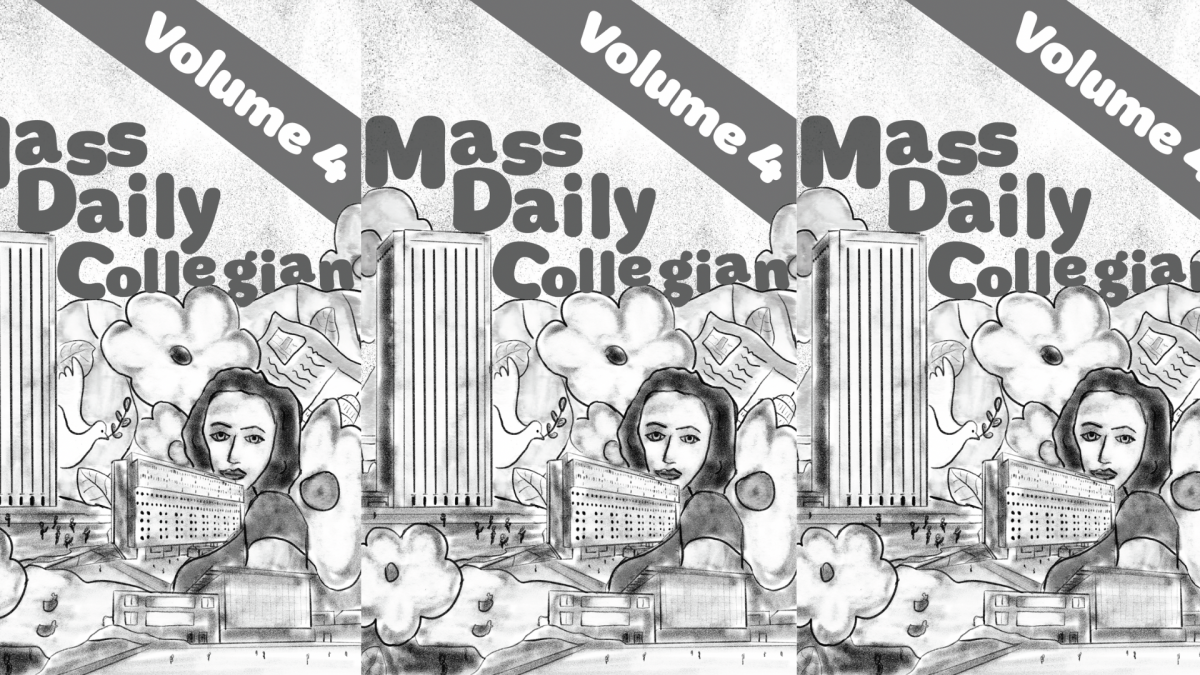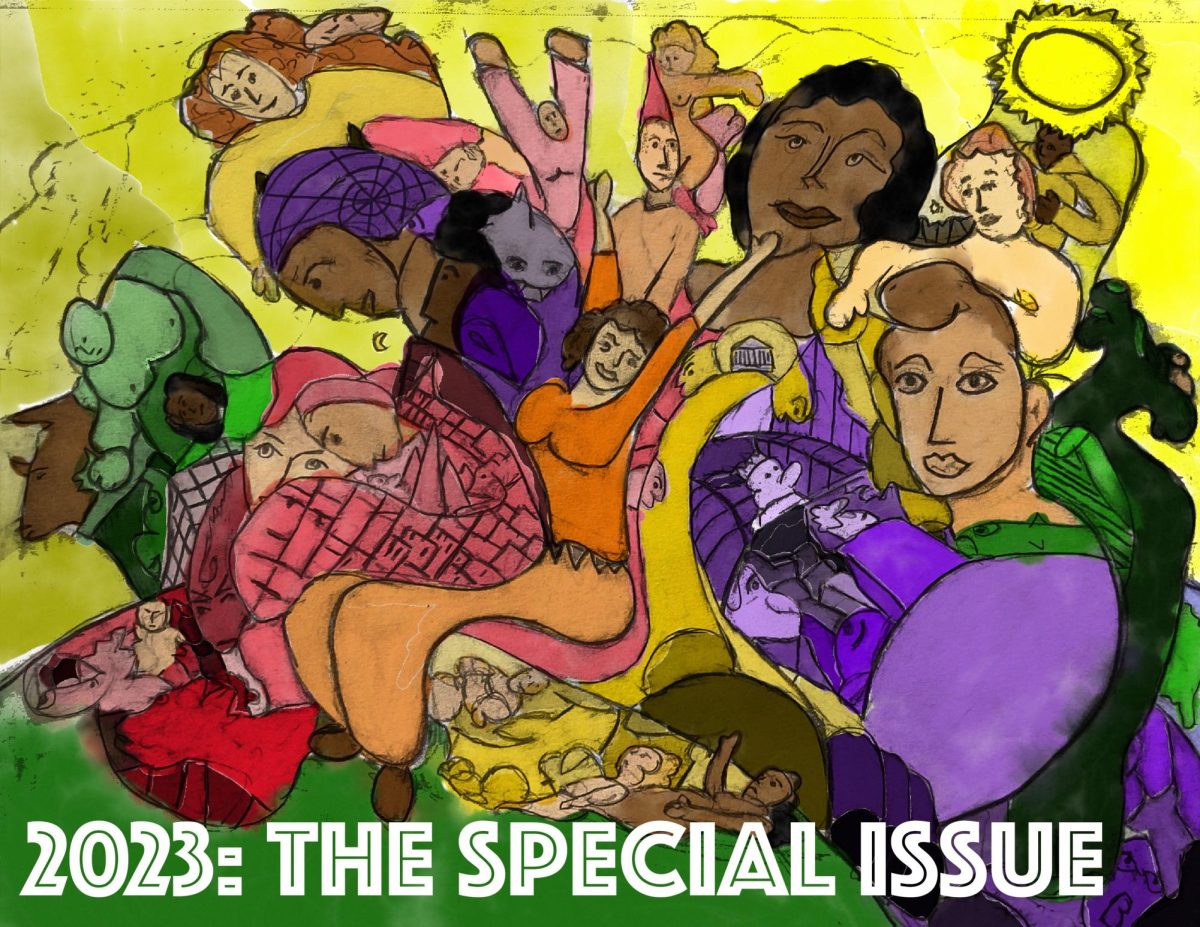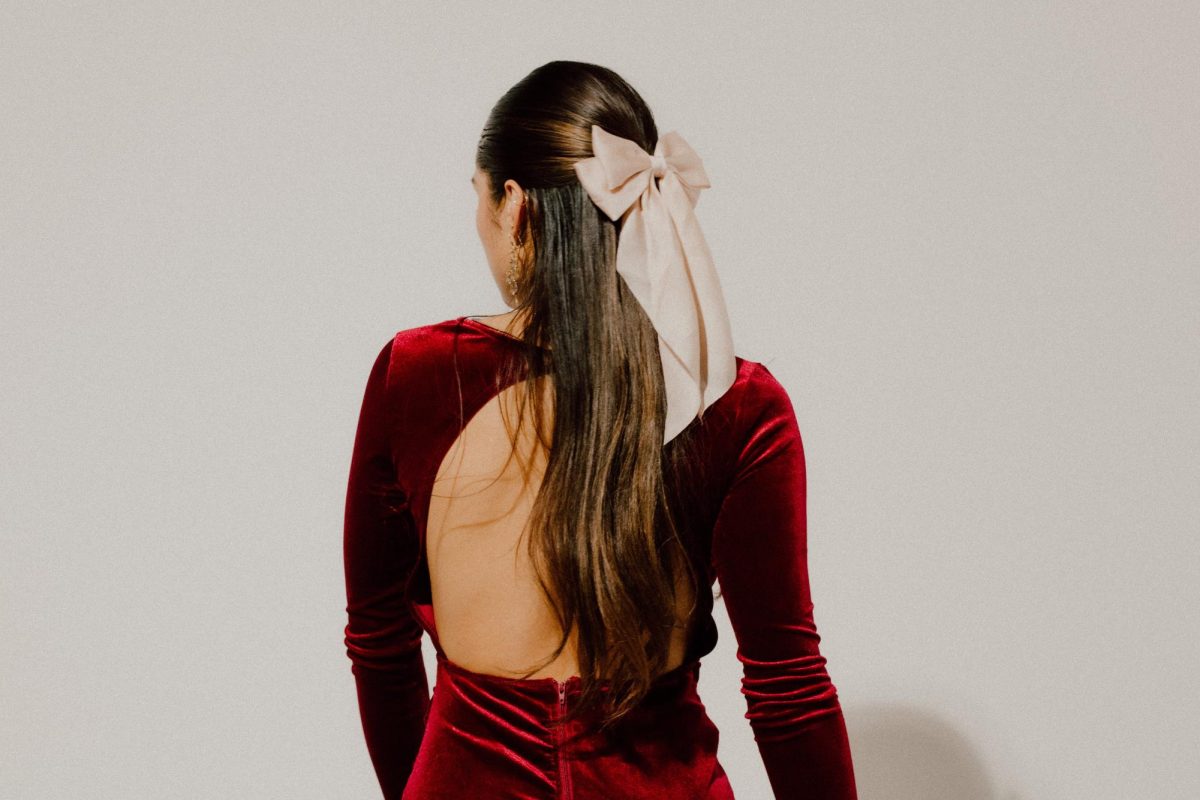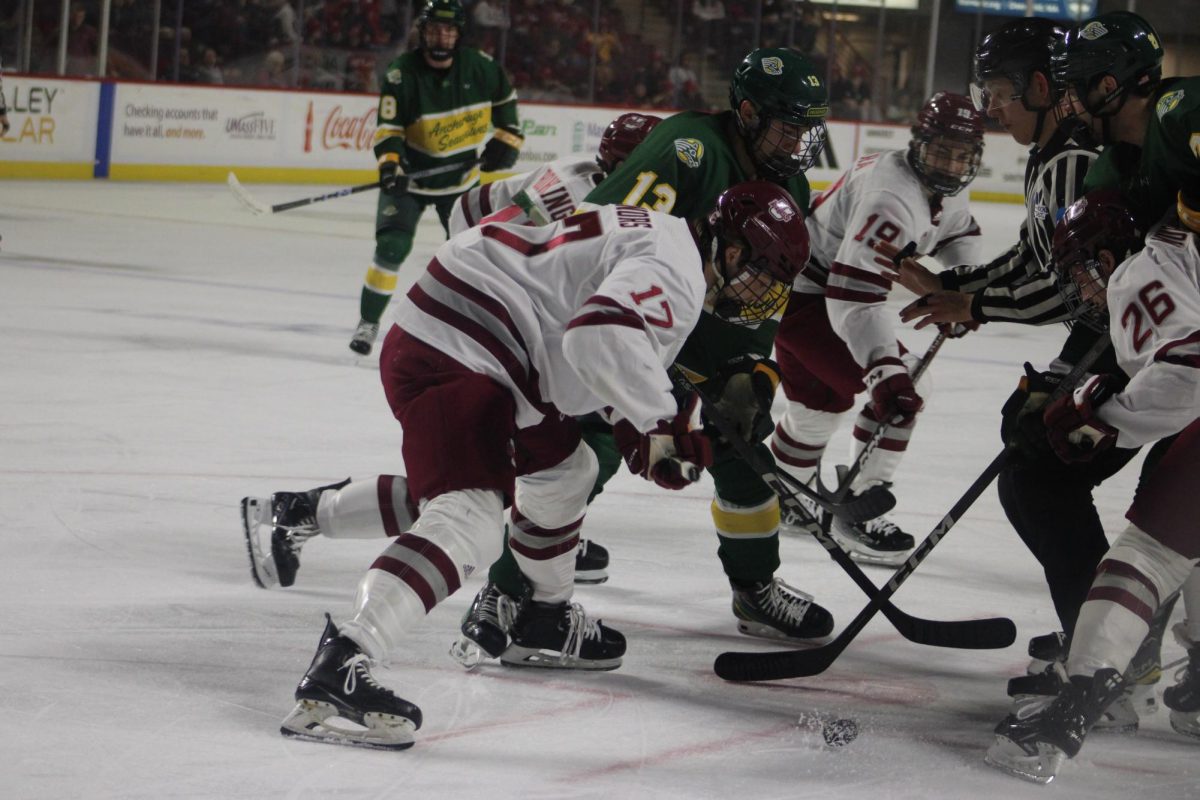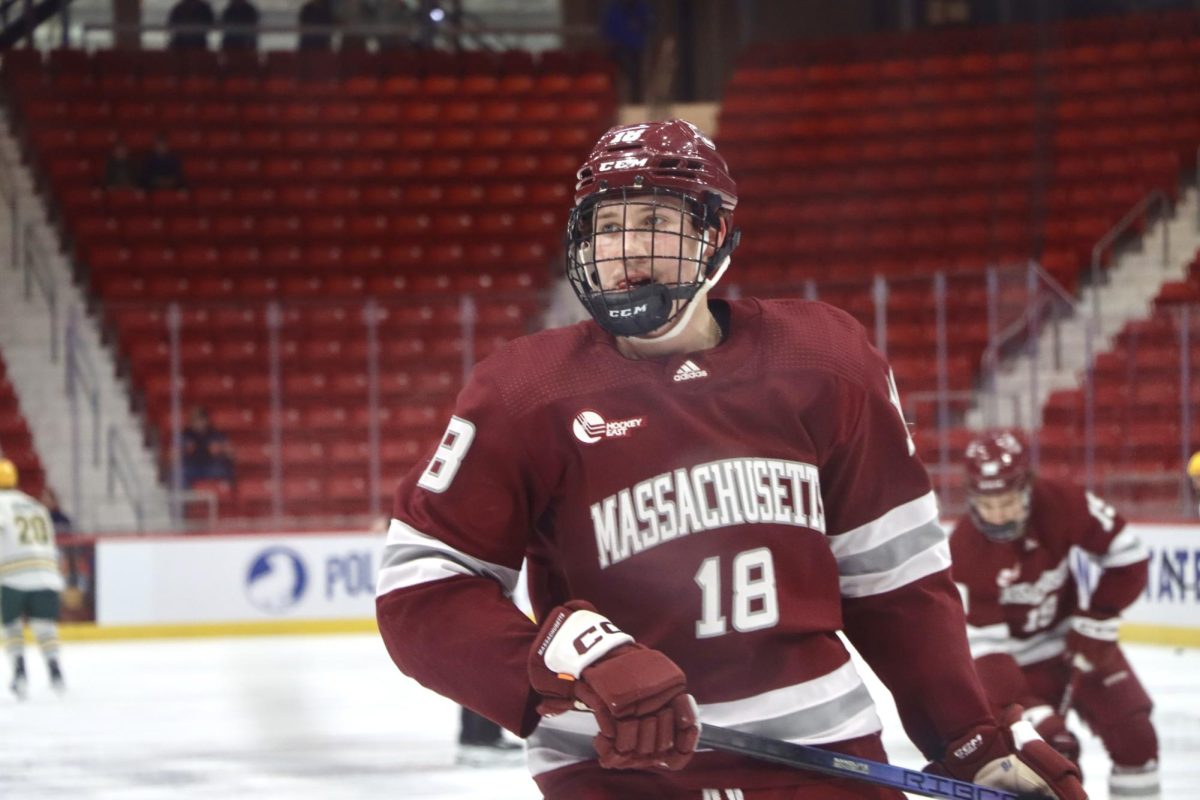Nadine Abuhamdeh is a talented student fashion designer at the University of Massachusetts Amherst. She is a sophomore majoring in studio arts, specializing in painting. The following interview details her artistic process and passion towards sharing the beauty of Palestinian culture through her personal projects and experience in the Arab Cultural Association.
How did your passion towards fashion originate?
I’ve been artistic my whole life, drawing is the only thing I remember doing consistently since childhood, and it’s always been a hobby that I had. I also took AP Art class in high school, which was around the time my interest in fashion truly started. I was really shy growing up, and I didn’t really like talking to many people. I knew the best way to make an immediate visible impression on other people was through my clothes, so I would watch runway shows, and I would make a note of all my favorite design aspects of what I saw. I then took inspiration from specific designers and looks and incorporated it into my own personal style. That’s what gave me a lot of happiness, being able to express myself visually without explicitly vocalizing it. I think that’s something more people should do.
Which designers did you draw inspiration from?
I really liked Gucci when Alessandro Michele and Tom Ford were the creative directors. When you look at the collections from the two designers, they’re both so different. Michele did a lot of beadwork and intricate designs, which inspired my own personal work. I also used to wear bright colors too. But now that I’m in college, I’ve only been wearing gray, blue and black, and I focus more on silhouette. And I find a lot of beauty in simplicity and clothing that fits you correctly. I really like Vince, all of their clothes are so simple with good quality materials, like silk and cashmere. I really admire how well put together their pieces are, and that’s where my inspiration has gravitated towards lately.
Did you have technical training or were you self-taught?
I was entirely self-taught. Painting and drawing were intuitive, but sewing was much harder. I realized how important it is to learn how to sew, so I started learning in high school. I made my first dress, which had so many technical flaws, but I continued ever since. I’m actually in the process of creating my own fashion line right now. I’m working with a manufacturer, because for a professional collection, I’d like to work with someone more established. But designing my own pieces has been so exciting, and nothing else has brought so much joy.
What does the initial sketching process entail? What materials do you use?
I usually use watercolor, and I focus a lot on fashion and portrait work. My art classes at college have emphasized the value of original work, which was a new venture for me. The designs my friend Amira Elmansoury had me do for the Arab Cultural Association also helped me open my eyes to a different art form. I had dabbled a little bit in calligraphy previously, because I painted for my mom, but showing my work to Elmansoury really solidified this interest. It made me realize how much I enjoy doing calligraphy-based designs and that it’s something I want to continue exploring. The artwork I did conceptually was also all Elmansoury’s ideas. I thought it was so great to share ideas with her openly and see the process of ideation to a tangible product was so cool to see, and it inspired me to create more work in collaboration with other people and I think there’s so much beauty in the process.
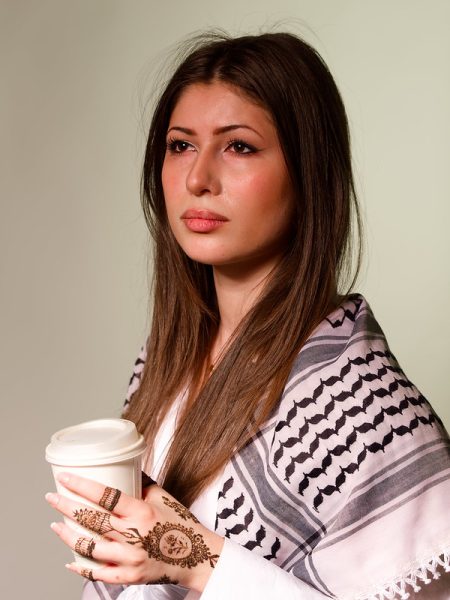
How has being a Palestinian American influenced your perspective on fashion design?
As a Palestinian American, I want to share my culture through my work, because there’s a lot of aspects of Palestinian culture that are under-recognized or appreciated. I don’t think the beauty of Palestinian culture is represented enough. It makes me happy that I can spread the word and show people things that they might not know.
What are some characteristics of Palestinian clothing?
Traditional Palestinian clothes have a lot of embroidery, and since the architecture and land is so beautiful and historic, a lot of those symbols are incorporated into the garments. Palestinian women usually wear black and white dress thobes, sometimes having the traditional keffiyeh pattern as well. A lot of the embroidery represents the timelessness of nature, like olive trees and flowers, and it’s super cool that people from centuries ago would communicate those symbols through their embroidery. We regard olive trees as “blessed trees.” The symbols are connected to make big lines and patterns.
Have you been able to connect with other Palestinian American students on campus?
There’s not a ton of Palestinian students here, but I do have a few friends, and it’s been honestly life changing. I really appreciate being around those who have the same identity and appreciation for the culture as me. We have similar backgrounds, and for all my life before UMass, I didn’t have anyone Middle Eastern or Muslim in classes. I really have so much appreciation for my background through being with my friends at college, and I love bonding over our shared experiences. I met Elmansoury for the first time at the ACA club expo, and the first thing she said to me was that I look like Nancy Ajram, a Lebanese singer. We ended up becoming really good friends since then. My intention through my work is to share the beauty of Palestinian and Middle Eastern culture, and my friends at college have been so supportive. We have so much pride in our heritage.
How has your family reacted to your work?
My family is very supportive, I share my art with them, and they love it. My family has a strong artistic background. They initially wanted me to pursue something a little more traditional academically, but they have such a strong appreciation for the arts, and I’m really grateful for that.
What projects are you currently working on? What designs have you been most proud of?
Most of the work I’m doing right now is for the brand. Nothing is completely done yet, but I have a few sketches and prototypes. My embroidery work I’m very proud of, and it took hours of concentration. The design was completely inspired by things I see in runway collections. I love the extravagance of runway fashion, but a lot of the looks are not accessible to the public. I was frustrated that I couldn’t find anything online that I wanted to buy, so I wanted to make a piece myself, enjoying the design process while simultaneously dressing the way I want to.
What has the creative process for your brand been like?
When it comes to fashion design, my process is very intuitive. For example, if I want to make a dress, I want to understand what I’m trying to express through the dress. Ultimately, it comes from what I find interesting, even if it’s not super mainstream. I sit with my pencil and paper and close my eyes and think about what I want the end result to be; the colors and the type of person for the dress. I write everything that comes to mind, refine it based on practicality, and then from there it’s very intuitive from a construction and technical standpoint.
Do you have any other thoughts or comments as a young designer?
My final notes are that I’m super thankful to have the opportunity to talk about my work and how important it is for me to do work with the ACA, because I think Arab Americans should be more represented in the media. For example, I take a lot of inspiration from Hollywood, and I don’t really see a lot of Arab American actresses, producers and designers. I think making art is a step in changing that narrative, and I’m really happy to be working with ACA, a collaborative space with people of my same background so that we can uplift our communities.
Nadine Abuhamdeh can be reached at [email protected].
Laleh Panahi can be reached at [email protected].



